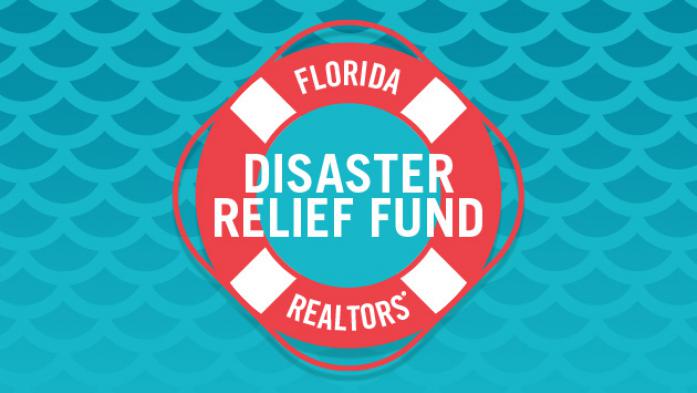As the scope of the loss of life, infrastructure and property damages becomes clearer, estimated U.S. damage and economic loss rises to between $225B – $250B.
STATE COLLEGE, PA. – As the scope of catastrophic infrastructure damage, loss of life, business disruptions and other economic impacts becomes clearer in the wake of Hurricane Helene, the AccuWeather Global Weather Center increased its estimate of the total damage and economic loss in the U.S. to between $225 billion and $250 billion.
The recent update from AccuWeather experts accounts for new and additional verified information, including the horrific loss of life, the immediate and long-term costs of healthcare for storm survivors and injured first responders, extended power outages, major infrastructure reconstruction projects for utilities, highways, bridges and railroad tracks, major business and travel disruptions, as well as long-term losses to tourism, technology, renewable energy and other industries across the southern Appalachians and southeastern U.S.
AccuWeather Chief Meteorologist Jon Porter had the following statement in an Oct. 3 news release: “Helene brought historic devastation and has tragically changed lives forever. The level of human suffering, the rising death toll and the tremendous damage to people’s homes and businesses, as well as to critical infrastructure, from telecommunications to roads and highways and water supplies has been overwhelming. Helene was a truly historic storm.
“Our hearts go out to everyone impacted. It will take months and years for many areas to recover, and some communities may not be rebuilt. While recovery operations have already started, it will be a long process given the widespread destruction of homes, businesses and infrastructure.
“Previous disasters suggest that even 10 years after such a damaging storm, rebuilding and recovery efforts may still be ongoing in some places. People and businesses in the impacted areas will need considerable support and assistance in the coming years.
“The long-term impacts from flooding could also contribute to health conditions due to exposure to mold, mildew, contaminated flood waters and other hazards. Tragically, in the coming decade, there may be thousands of excess deaths indirectly caused by the storm or stress from experiencing the devasting impacts. Additionally, the long tail of negative impacts to health will include the risk for significant and widespread mental health conditions, as seen in many other disasters.”
AccuWeather’s estimate also includes the projected costs of repairing or completely rebuilding infrastructure, including power substations and water treatment plants that were destroyed. Interstate 40 is not just impassable in some places, but the highway has been destroyed in some places, and Interstate 26 is impassable in some places.
The electric grid in some places does not exist anymore. It will take not just months but years to recover if they ever rebuild. Should these infrastructure repairs take even longer to repair than expected, the estimated total damage and economic loss estimate could increase.
The updated estimate also includes new reports on damage, loss and disruptions caused by storm surge, flooding rainfall and wind damage in Florida and Georgia. There were also millions of dollars of losses to agriculture, including cotton, peanuts, pecans, tobacco and others from the storm.
AccuWeather issued its first preliminary estimate for the total damage and economic loss from Hurricane Helene of $95 billion to $110 billion on Sept. 28. AccuWeather experts later updated the estimate for the total damage and economic loss for Hurricane Helene to between $145 billion to $160 billion on Sept. 30.
“The 2024 Atlantic hurricane season has taken a tremendous toll on the U.S. economy,” the company shared in its news release. “Many people impacted in the southern Appalachians do not have flood insurance. AccuWeather’s analysis shows that in some of the hardest-hit counties in North Carolina, less than 1% of homeowners have coverage for water damage through the National Flood Insurance program.
Porter said, “We know that many families and small business owners were likely underinsured for this level of catastrophic impacts. This is particularly problematic for small business owners, as FEMA statistics show nearly 50% of small businesses damaged by a natural disaster may never reopen. The latest weather disaster to hit the U.S. is straining federal, state and local resources.
“The disruption to businesses could last for weeks or months, and it will likely take years for many to recover. Hurricane Helene will likely further complicate the insurance crisis in high-risk areas, where some families and businesses are already facing skyrocketing premiums or having their coverage dropped altogether due to the growing threats of flooding rainfall and storm surge in vulnerable areas.”
Hurricane Helene will go down as one of the most damaging and impactful storms in U.S. history, along with Hurricane Ian from 2022, which brought between $180-$210 billion in total damage and economic loss; Hurricane Harvey, which caused $190 billion in total damage and economic loss, and Hurricane Irma ($80 billion), both in 2017; Sandy in 2012 ($210 billion); Katrina in 2005 ($320 billion), as adjusted for inflation. Other storms this year and estimated damage costs included $28-$32 billion for Beryl and $28 billion for Debby.
AccuWeather estimates Hurricane Maria caused an estimated $90 billion in total damage and economic loss in 2017. Nearly 3,000 fatalities were reported in Puerto Rico during Maria.
The deadliest hurricane in the United States in modern times would be Hurricane Katrina, which took the lives of about 1,200 people.
Helene impacted many of the same areas that were damaged by the disastrous flood of 1916 in Asheville and across western North Carolina.
For the areas impacted by flooding, water damage tends to be particularly costly to repair and may either not be covered by homeowner’s insurance policies or underinsured relative to actual damage sustained for people who do carry additional flood insurance.
The AccuWeather estimate largely accounts for damage to homes, businesses, medical facilities, roadways and vehicles, as well as power outages, which results in food spoilage and interruption to medical care.
AccuWeather incorporates independent methods to evaluate all direct and indirect impacts of the storm, includes both insured and uninsured losses and is based on a variety of sources, statistics and unique techniques AccuWeather uses to estimate the damage, the news release states.
It includes damage to property, job and wage losses, crops, infrastructure damage, interruption of the supply chain, auxiliary business losses and flight delays. The estimate also accounts for the costs of evacuations, relocations, emergency management and the extraordinary government expenses for cleanup operations and the long-term effects on business logistics, transportation and tourism as well as the health effects and the medical and other expenses of unreported deaths and injuries.
AccuWeather estimates can sometimes be multiples of estimates released by other sources because those sources consider only insured losses or provide an incomplete picture of the total damage and economic impact, which the AccuWeather estimate considers and includes.
For the areas impacted by flooding, water damage tends to be particularly costly to repair and may either not be covered by homeowner’s insurance policies or underinsured relative to actual damage sustained for people who do carry additional flood insurance.
Copyright © 2024, The Carteret County News-Times, all rights reserved.
Go to Source
Author: marlam





